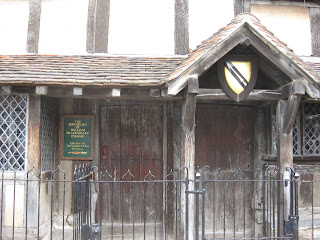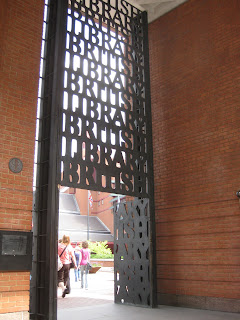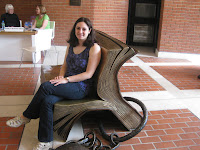WHERE CHARLES DICKENS LIVED
We found the house where CD lived. His house is open to the public for a fee, whereas many other houses are now private residences. I really feel like the title of CD's book, "A Tale of Two Cities," is similar to the title of my paper, "From Queens to King's." I am telling a tale of two academic libraries in cities: New York and London.
THE ROMAN GALLERIES
We walked through the Roman Galleries, and I was reminded of the Met. I almost felt as if I were home! The pottery was beautiful, and I especially liked the drapery of clothing carved in stone. There was a reconstructed temple and large gates with animals.
THE LIBRARY
Paul Hamlyn Library
reference library supported by ph foundation
resources for teachers
25,000 items
hist, arch, art hist, soc sci, relig, reference
families, tourists, students, museum staff, community, general visitors
no borrowing
online catalog, databases and useful websites
dewey
Joanna Bowring-Head of Libraries in museum
this is public
there is central library--for museum staff only
different departments have libraries
THE ROSETTA STONE
One of the the most famous items at the British Museum is the Rosetta Stone. There was a crowd of people around it.
WHERE VIRGINIA WOLFE LIVED
We walked around Tavistock Square looking for a house with the number 52 or a plaque indicating that VW had lived there. Finally, we decided to go into the hotel and ask. The man said that her house was once the hotel. He was upset when I showed him a face of disbelief. I just thought there would be a plaque on the hotel. We went into the gardens and posed next to her statue.
THE FOOD
I take back what I said about the food being good. It was good at first because it was different and exciting. Maybe I'm picky. I''m from NYC, so I have every type of ethnic food one can imagine around the corner. Now that I'm getting used to it, I haven't found anything I really like except fresh fruits and vegetables. I think I need to start eating better, but I don't know where to begin.
 SHAKESPEARE'S BIRTHPLACE
SHAKESPEARE'S BIRTHPLACE





 EXHIBIT
EXHIBIT
 BLOGGING
BLOGGING BEFORE ST. PAUL'S CATHEDRAL
BEFORE ST. PAUL'S CATHEDRAL


 LIFE ABROAD
LIFE ABROAD